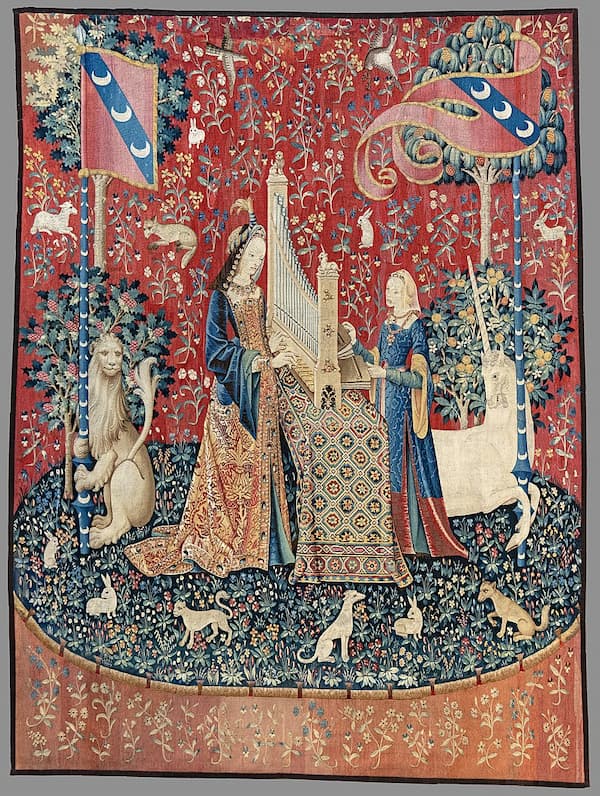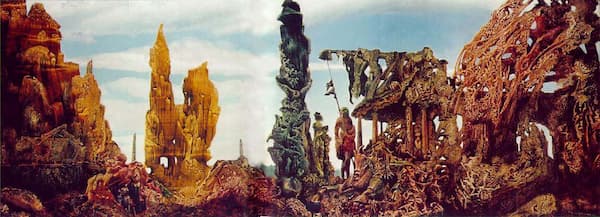Britta Byström: Infinite Rooms
Japanese artist Yayoi Kusama (b. 1929) has taken the idea of dots and pumpkins to an infinite extreme. She says that creating art is how she maintains her sanity, ‘I followed the thread of art and somehow discovered a path that would allow me to live’.
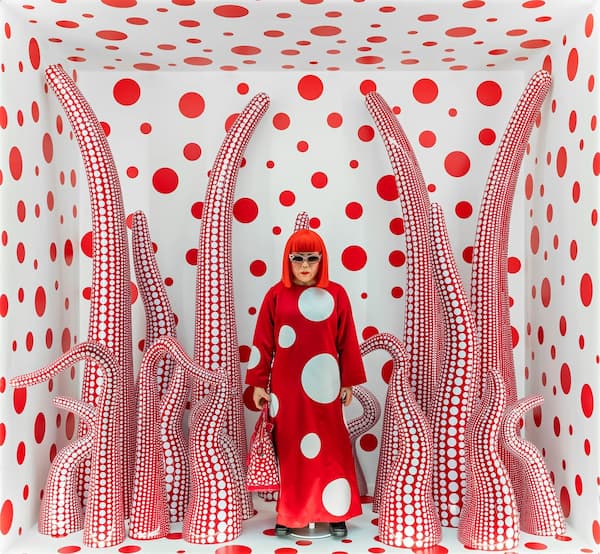
Yayoi Kusama and her window display for Louis Vuitton, 2012–2015
When she was a child, she began to experience hallucinations that included intense fields of dots. Starting in the 1950s, she began painting the polka dots that have become the signature of her work. Her work with pumpkins began in the 1990s, and for her, the pumpkin represented a kind of self-portrait.
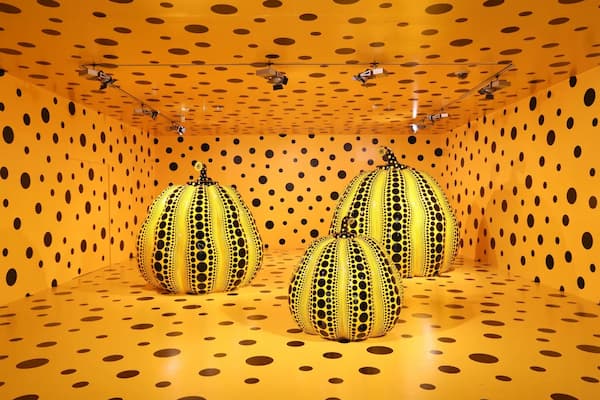
Yayoi Kusama: Pumpkin
From her hallucinations, she began to develop vast areas covered with polka dots. She called these ‘infinity nets’, and her first one was done in 1939 when she was 10. Her early works, entitled Infinity Nets, were very large-scale, including a 30-foot-long (9 m) canvas painting.
Beginning in 1963, Kusama folded the idea of her infinity paintings into mirror rooms called Mirror/Infinity.
‘In these complex infinity mirror installations, purpose-built rooms lined with mirrored glass contain scores of neon-coloured balls hanging at various heights above the viewer. Standing inside on a small platform, an observer sees the light repeatedly reflected off the mirrored surfaces to create the illusion of a never-ending space.
In a recent exhibit at the Tate Modern, Infinity Mirrored Room – Filled with the Brilliance of Life gave visitors the ability to walk inside one of her immersive installations.
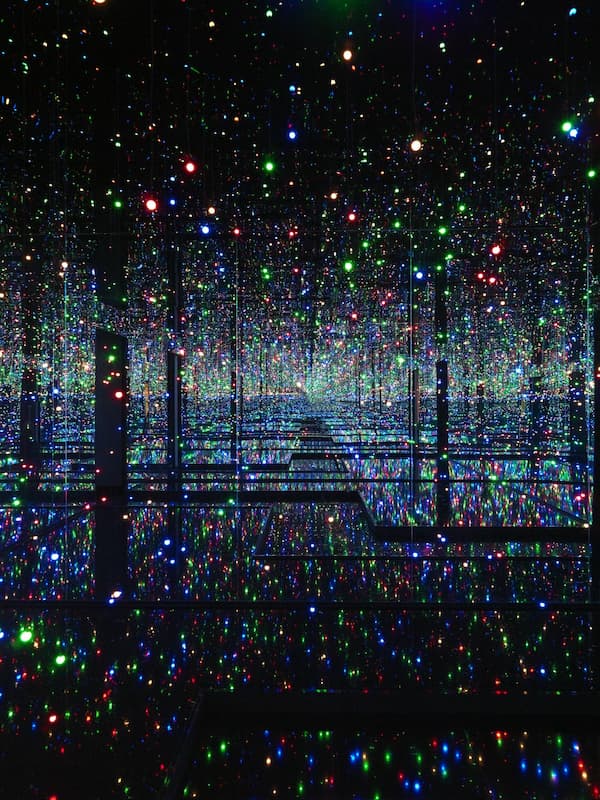
Infinity Mirrored Room – Filled with the Brilliance of Life, 2024 (Tate Modern)
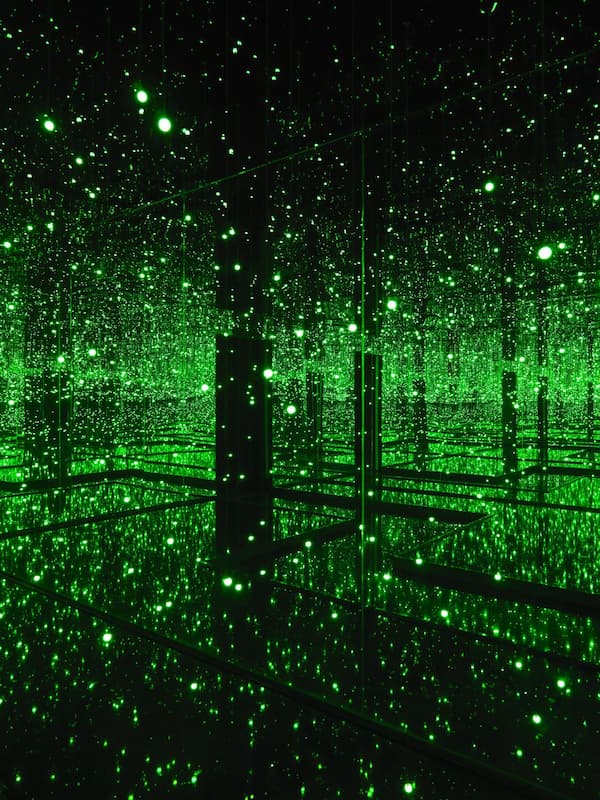
Infinity Mirrored Room – Filled with the Brilliance of Life, 2024 (Tate Modern)
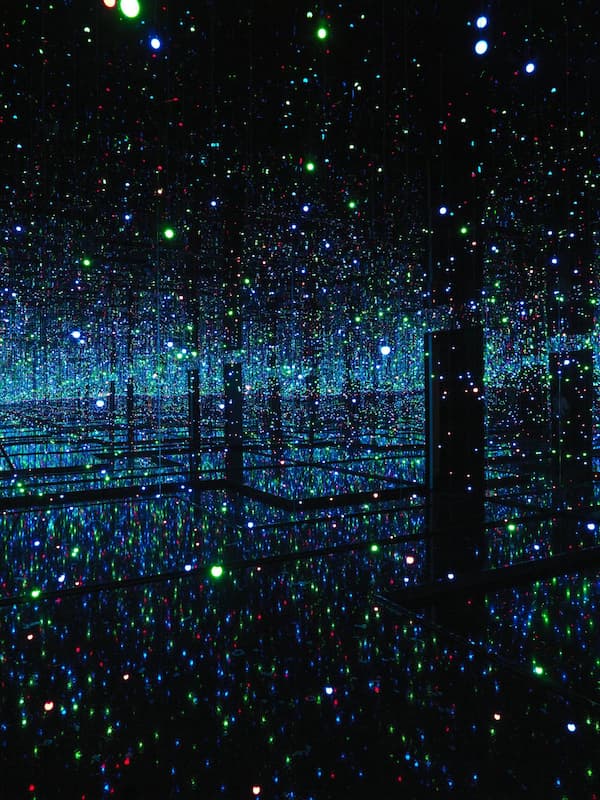
Infinity Mirrored Room – Filled with the Brilliance of Life, 2024 (Tate Modern)

Infinity Mirrored Room – Filled with the Brilliance of Life, 2024 (Tate Modern)
As a contemporary artist, Kusama is considered one of the most important living artists in Japan. She is also the world’s top-selling female artist and the most successful living artist.
One composer she influenced was the Swedish composer Britta Byström (b. 1977).
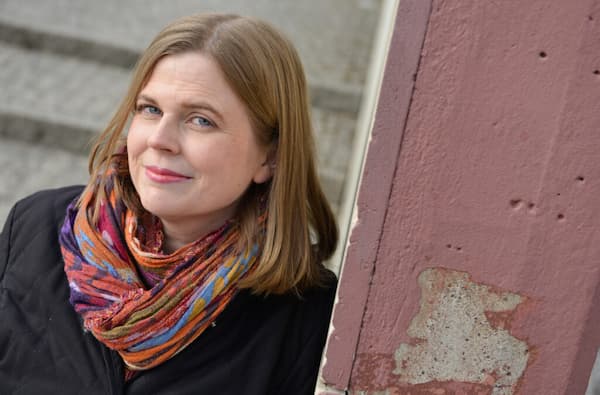
Britta Byström
Her 2016 composition, Infinite Rooms, is a concerto for violin/viola, double bass, and orchestra based on Kusama’s Infinity Rooms. As the composer describes it, ‘In Kusama’s world, one looks into a room in which a small detail – a pumpkin, or a small dot, say – is infinitely replicated through the use of mirrors. The motif is simple and easy to distinguish, and the resulting complexity is created by the replication alone’.
Byström’s 7-movement work takes this idea and puts it into an orchestral context. Each movement takes one detail and then brings it into an infinity room. These include ‘a room of figures’, a ‘pizzicato room’, a ‘whistling room’ (in which the orchestra whistles), a ‘staccato room’, a ‘chorale room’ and finally a ‘combination room’ looking back on all of the previous rooms.
In addition to the sound, the composer also wants us to imagine the soloists as casting shadows: ‘I have imagined the violin and viola as figures casting long shadows – double bass shadows – while the double bass throws short violin shadows’. She chose the instruments for their ranges – between the violin and viola and the double bass, their range is equivalent to the entire range of the piano, but they also have the ability to play the same notes where their ranges overlap.
Britta Byström: Infinite Rooms – Leggiero [figure 1] – (Malin Broman, violin; Rick Stotijn, double bass; Västerås Sinfonietta; Simon Crawford-Phillips, cond.)
Britta Byström: Infinite Rooms – Grazioso [figure 2] – (Malin Broman, violin; Rick Stotijn, double bass; Västerås Sinfonietta; Simon Crawford-Phillips, cond.)
In the Whistling Room, the orchestra adds their own sound.
Britta Byström: Infinite Rooms – Calmo [figure 3] – (Malin Broman, violin; Rick Stotijn, double bass; Västerås Sinfonietta; Simon Crawford-Phillips, cond.)
Britta Byström: Infinite Rooms – Energico [figure 4] – (Malin Broman, violin; Rick Stotijn, double bass; Västerås Sinfonietta; Simon Crawford-Phillips, cond.)
In the chorale room, she adds a musical saw for a change in sound- rather like an eerie whistle. Traces of Gottfried Heinrich Stölzel’s Bist du bei mir are given to the two soloists.
Britta Byström: Infinite Rooms – Calmo, cantando [figure 5] – (Malin Broman, violin; Rick Stotijn, double bass; Västerås Sinfonietta; Simon Crawford-Phillips, cond.)
Britta Byström: Infinite Rooms – Ritmico [figure 6] – (Malin Broman, violin; Rick Stotijn, double bass; Västerås Sinfonietta; Simon Crawford-Phillips, cond.)
Britta Byström: Infinite Rooms – Dolce [figure 7] (Malin Broman, violin; Rick Stotijn, double bass; Västerås Sinfonietta; Simon Crawford-Phillips, cond.)
Byström worked closely with the two soloists in developing this work and dedicated the work to them as well. In 2020, it was awarded the most important Swedish composition prize, the Christ Johnson Music Prize.
Adding Kusama’s vision of infinity to the orchestral idea of infinity has resulted in a work that surrounds you, engulfs you, and lets you explore the infinity possible in sound.
For more of the best in classical music, sign up for our E-Newsletter


